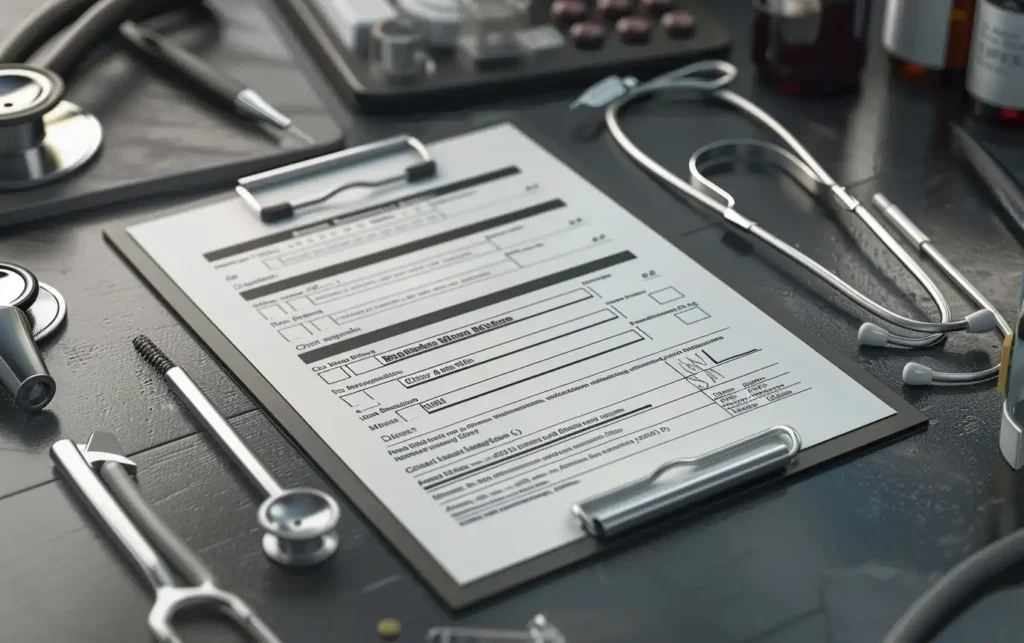Pharmacovigilance (PVG), which involves monitoring the safety of medicines, is crucial for pharmaceutical companies to ensure patient safety and comply with regulations globally.

However, navigating the complex local regulations across multiple countries can be challenging.
For international companies entering or expanding in the Belarusian market, understanding the country’s PVG system is essential to avoid consequences like product recalls, fines, and reputational damage from non-compliance.
Regulatory Framework in Belarus
Key Legislation and Guidelines on Pharmacovigilance in Belarus
The pharmacovigilance system in Belarus is governed by several key pieces of legislation and guidelines, including:
- Law on Pharmaceuticals: This overarching law establishes the legal framework for the regulation of pharmaceuticals in Belarus, including provisions related to pharmacovigilance activities.
- Instruction on the Procedure for Reporting Adverse Reactions to Pharmaceuticals: This document outlines the specific requirements and processes for reporting adverse events (AEs) and serious adverse events (SAEs) associated with pharmaceutical products in Belarus.
- Instruction on the Procedure for Organizing the Pharmacovigilance System: This instruction provides guidance on the establishment and maintenance of an effective pharmacovigilance system within pharmaceutical companies operating in Belarus.
- Adoption of Eurasian Economic Union (EAEU) Good Pharmacovigilance Practices (GVP): Belarus, as a member state of the EAEU, has adopted the EAEU GVP, which aims to harmonize pharmacovigilance practices across the union’s member countries. Compliance with the EAEU GVP is mandatory for companies operating in Belarus.
Regulatory Authorities in Belarus
The primary regulatory authority responsible for overseeing the pharmacovigilance system in Belarus is the Ministry of Healthcare. Within the Ministry, the Center for Expertise and Tests in Healthcare (CETH) plays a crucial role in the implementation and enforcement of PVG regulations.
The CETH is responsible for:
- Receiving, processing, and evaluating reports on adverse reactions to pharmaceuticals
- Conducting inspections and audits to ensure compliance with PVG regulations
- Providing guidance and support to pharmaceutical companies on PVG-related matters
- Collaborating with international organizations and regulatory bodies to align with global best practices
Pharmacovigilance System Master File (PSMF) in Belarus
The EAEU GVP introduces the concept of a Pharmacovigilance System Master File (PSMF), a comprehensive document that outlines a company’s pharmacovigilance system and its compliance with GVP requirements. While the EAEU PSMF is not a mandatory requirement under Belarusian national legislation, it is considered an addendum to the existing documentation.
Companies operating in Belarus should be prepared to provide the following information regarding their PSMF:
- PSMF Location: The physical and/or electronic location(s) where the PSMF is stored and maintained.
- PSMF Submission: The timelines and procedures for submitting the PSMF to the CETH upon request.
- PSMF Updates: The processes for regularly updating and maintaining the PSMF to reflect changes in the company’s pharmacovigilance system.
Table 1: Key Legislation and Guidelines for Pharmacovigilance in Belarus
| Legislation/Guideline | Description |
| Law on Pharmaceuticals | Establishes the legal framework for regulating pharmaceuticals, including PVG provisions |
| Instruction on Reporting Adverse Reactions | Outlines requirements and processes for reporting AEs and SAEs |
| Instruction on Organizing the PVG System | Provides guidance on establishing and maintaining an effective PVG system |
| EAEU Good Pharmacovigilance Practices (GVP) | Harmonized guidelines adopted by Belarus as an EAEU member state |

Adverse Event Reporting in Belarus
Timely and accurate reporting of adverse events (AEs) and serious adverse events (SAEs) is a cornerstone of an effective pharmacovigilance system.
Belarus has established specific requirements and processes to ensure the proper documentation and communication of safety information related to pharmaceutical products.
Reporting Requirements
The Belarusian regulatory authorities have approved standardized forms for reporting suspected AEs and unexpected SAEs.
These forms are designed to capture essential information, including:
- Patient Details: Initials, medical record number, age, gender, weight, and other relevant demographic information.
- Reporter Information: Full name, contact details, and workplace of the healthcare professional or consumer reporting the event.
- Product Details: Name of the suspected product, batch/lot number, route of administration, indication, and dosage information.
- Event Description: A detailed account of the adverse event, including the onset date, duration, severity, and any relevant medical history or concomitant medications.
It is crucial for companies to ensure that all required data elements are accurately captured and reported to maintain compliance with local regulations.
Reporting Timelines in Belarus
The timelines for reporting AEs and SAEs in Belarus are as follows:
- Serious Adverse Events (SAEs): Companies must submit expedited reports for unexpected SAEs within 15 calendar days of becoming aware of the event.
- Non-Serious Adverse Events: Reports for non-serious AEs should be included in the Periodic Safety Update Report (PSUR) submissions.
- Periodic Safety Update Reports (PSURs): PSURs must be submitted according to the established timelines, which may vary depending on the product and its risk classification. The CETH provides specific guidance on PSUR submission timelines during the product registration process.
Companies should have robust processes in place to ensure timely identification, evaluation, and reporting of AEs and SAEs to meet these regulatory deadlines.
Data Protection and Confidentiality in Belarus
The EAEU GVP and Belarusian national legislation emphasize the importance of protecting personal data and maintaining confidentiality when handling pharmacovigilance information.
Companies operating in Belarus must implement the following measures:
- Personal Data Protection: Ensure that all personal data collected during the AE reporting process is handled in compliance with data protection regulations, including obtaining necessary consents and implementing appropriate security measures.
- Confidentiality Measures: Establish protocols to maintain the confidentiality of reported information during data transfer and storage, such as secure electronic systems, encrypted communication channels, and restricted access to sensitive data.
Failure to comply with data protection and confidentiality requirements can result in significant penalties and legal consequences.

Reporting Channels for AE and SAE Reports in Belarus
All AE and SAE reports in Belarus must be submitted to the CETH, the designated regulatory authority responsible for receiving and processing pharmacovigilance data. Currently, reports can be submitted through the following channels:
- Paper-based Reporting: Companies can submit completed AE and SAE reporting forms via postal mail or in-person delivery to the CETH offices.
- Electronic Reporting: While not yet fully implemented, Belarus is exploring the development of an electronic reporting system to streamline the submission and processing of pharmacovigilance data.
As electronic reporting capabilities are introduced, companies should be prepared to adapt their processes and systems to comply with any new requirements or guidelines issued by the CETH.
Reporting Checklist for Belarus
[ ] Use approved AE and SAE reporting forms
[ ] Capture all required data elements accurately
[ ] Adhere to expedited reporting timelines for SAEs (15 calendar days)
[ ] Include non-serious AEs in Periodic Safety Update Reports (PSURs)
[ ] Implement measures to protect personal data and maintain confidentiality
[ ] Submit reports to the CETH through approved channels (currently paper-based or in-person)
[ ] Monitor for updates on electronic reporting system implementation
By following these reporting requirements and best practices, international companies can ensure compliance with the adverse event reporting obligations in Belarus and contribute to the overall goal of patient safety.
Comparison of Belarus with EU GVP Practices
While the EAEU GVP adopted by Belarus is largely harmonized with the European Union (EU) guidelines, there are some notable differences in the implementation and specific requirements of the pharmacovigilance system.
Areas of Harmonization with EU GVP:
- Adoption of similar principles and processes for AE reporting, signal detection, and risk management
- Emphasis on data protection and confidentiality measures
- Requirement for a Pharmacovigilance System Master File (PSMF)
Key Differences:
- Lack of Unified EAEU PVG Database: Unlike the EU’s EudraVigilance system, the EAEU does not have a centralized database for pharmacovigilance data. Reports originating from one EAEU country must be submitted individually to other member states.
- Potential Differences in PSUR Timelines: While the EU has established timelines for PSUR submissions based on product risk classifications, Belarus may have different timelines for specific products during the national registration process.
- Local Forms and Requirements: Belarus has its own locally approved forms and specific data requirements for AE and SAE reporting, which may differ slightly from the EU forms.
- National vs. Centralized Marketing Authorization Process: Unlike the EU’s centralized procedure for marketing authorizations, Belarus follows a national registration process for pharmaceuticals, which may impact pharmacovigilance requirements and timelines.
Table 2: Comparison of EAEU and EU Pharmacovigilance Practices
| Aspect | EAEU (+ Belarus) | European Union |
| Guiding Principles | EAEU GVP | EU GVP |
| Centralized Database | No unified database | EudraVigilance |
| PSUR Timelines | Potential differences | Harmonized based on product risk |
| Reporting Forms | Local forms | EU forms |
| Marketing Authorization | National process | Centralized procedure |
Inspections and Audits of Pharmaceutical Companies in Belarus
To ensure compliance with pharmacovigilance regulations, the CETH conducts regular inspections and audits of pharmaceutical companies operating in Belarus.
Regulatory Inspections by CETH:
- The CETH has the authority to conduct on-site inspections to assess a company’s pharmacovigilance system and processes.
- Inspections may be routine or triggered by specific events, such as product safety concerns or non-compliance issues.
- The scope of inspections can cover various aspects, including AE reporting procedures, PSMF maintenance, risk management activities, and data integrity.
Preparing for PVG Inspections:
- Companies should maintain inspection-readiness by regularly reviewing and updating their pharmacovigilance documentation, processes, and training programs.
- Conducting internal audits and mock inspections can help identify potential gaps and areas for improvement before a regulatory inspection.
- Designating a dedicated team or personnel responsible for coordinating and facilitating inspections can streamline the process.
Role of Audits in Ensuring GVP Compliance:
- In addition to regulatory inspections, companies should implement a robust internal audit program to continuously monitor and assess their pharmacovigilance system’s effectiveness.
- Audits can identify areas of non-compliance, process inefficiencies, and opportunities for improvement, allowing companies to take corrective and preventive actions proactively.
- Regular audits demonstrate a company’s commitment to quality and compliance, which can be beneficial during regulatory inspections.

Challenges and Best Pharmacovigilance Practices in Belarus
Operating in the Belarusian market presents unique challenges for international pharmaceutical companies, requiring a strategic approach and adherence to best practices.
Language Barriers and Cultural Differences:
- Companies should be prepared to navigate language barriers and cultural differences when interacting with local regulatory authorities and healthcare professionals.
- Employing local resources or partnering with experienced regulatory consultants can help bridge these gaps and ensure effective communication.
Ensuring Consistent Global Reporting:
- Maintaining consistent reporting practices across multiple markets is crucial for effective pharmacovigilance and regulatory compliance.
- Companies should establish standardized global processes and systems for AE reporting, signal detection, and risk management, while accounting for local requirements.
Maintaining Inspection-Readiness:
- Regulatory inspections can occur with minimal notice, making it essential for companies to maintain a state of inspection-readiness at all times.
- Regular training, process reviews, and mock inspections can help identify and address potential gaps or areas of non-compliance.
Leveraging Technology and Automation:
- Implementing robust pharmacovigilance software and automated systems can streamline processes, improve data accuracy, and enhance compliance with reporting timelines.
- As Belarus explores electronic reporting capabilities, companies should be prepared to adapt their systems and processes accordingly.
Importance of Local Regulatory Intelligence:
- Staying up-to-date with the latest regulatory developments, guidance documents, and industry best practices in Belarus is crucial for maintaining compliance.
- Engaging with local regulatory experts, attending industry events, and monitoring official communications can provide valuable insights and intelligence.
Flowchart: AE Reporting Process in Belarus
Key GVP Terms and Definitions:
- Adverse Event (AE): Any untoward medical occurrence in a patient administered a pharmaceutical product, which does not necessarily have a causal relationship with the treatment.
- Serious Adverse Event (SAE): An AE that results in death, is life-threatening, requires hospitalization or prolongation of existing hospitalization, results in persistent or significant disability/incapacity, or is a congenital anomaly/birth defect.
- Periodic Safety Update Report (PSUR): A periodic report that summarizes the worldwide safety experience of a pharmaceutical product, including all reported AEs and risk-benefit evaluations.
- Pharmacovigilance System Master File (PSMF): A detailed document that describes the pharmacovigilance system and its compliance with GVP requirements.
Have Questions About the PVG System in Belarus?
International pharmaceutical companies may find local expertise invaluable when navigating the Belarus regulatory and pharmacovigilance procedures. Specialized agencies like Delta Medical, with offices across the Eurasia region,including Belarus, Azerbaijan and Armenia, Ukraine, Moldova and Central Asia, are well-positioned to guide companies through nuanced regulatory requirements.
Our on-the-ground presence in Minsk, relationships with health authorities, and experience submitting regional regulatory paperwork makes working in these emerging markets more seamless so that companies can focus core efforts on drug development and commercialization. Our targeted guidance to complement your in-house capabilities is key to efficiently satisfying Belarus requirements and ensuring patient safety.
As a Swiss pharmaceutical company, Delta Medical can also handle marketing, logistics, distribution and sales to help companies achieve successful commercialization in these markets.
Frequently Asked Questions about Belarus Pharmacovigilance
What are the key pharmacovigilance laws and guidelines in Belarus?
- The Law on Pharmaceuticals
- Instruction on the Procedure for Reporting Adverse Reactions
- Instruction on Organizing the Pharmacovigilance System
- Adoption of the Eurasian Economic Union (EAEU) Good Pharmacovigilance Practices (GVP)
What is the role of the Center for Expertise and Tests in Healthcare (CETH)?
What are the adverse event reporting requirements and forms in Belarus?
What are the adverse event reporting timelines in Belarus?
- Serious AEs: 15 calendar days
- Non-serious AEs: Included in Periodic Safety Update Reports (PSURs)
- PSURs: Timelines vary by product risk classification